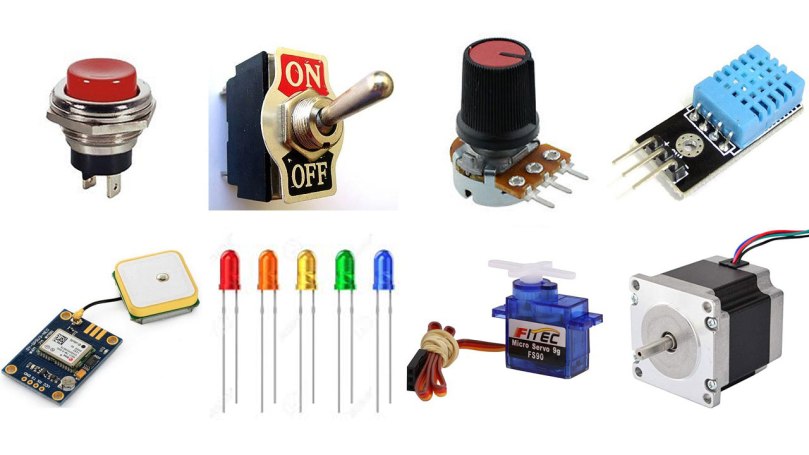The Arduino is a wonderful toy for any hobbyist who likes to tinker with electronics. With its configurable digital (20) or analog (6) inputs and outputs we can read signals from switches, sensors or data streams and we can control LEDs, relays, motors, (power)FETs and what have you …
The Arduino board has a processor, program- and data memory, a USB interface and even EEPROM is on board to store data to be used at the next power on. And the best part is … all of this comes at the price of just about €3,- (Aliexpress). An ‘Arduino Starter Kit’ is also available, as well as many different types of sensors and actuators to quickly get started with a host of possible experiments.
Yes … there is software involved to get things done and not everyone likes to write code, but even then you can still download and use the countless applications that are readily available on the internet, there is a big and ever growing Arduio community.
To get started with Arduino is easy. These are the 6 simple steps to get you up and running. (The images can be clicked to see a larger one.)
 1. Download the software from www.arduino.cc
1. Download the software from www.arduino.cc
2. Install the software. During install you can apply some settings and choose an install folder. If you simply leave everything at the default settings you’ll end up with a fine working Ardiuino environment.
3. Download and install the CH340 USB-serial driver here, or, if this link does not work anymore, Google for ‘ch340 driver’.
 4. Connect your Arduino board now via USB. Open the Arduino program and in the ‘Tools’ menu select the board that you have connected in case it differs from ‘Uno’.
4. Connect your Arduino board now via USB. Open the Arduino program and in the ‘Tools’ menu select the board that you have connected in case it differs from ‘Uno’.
 5. Also in the ‘Tools’ menu click on ‘Port’ and select the COM port where the Arduino is connected to. If multiple ports are listed and the text is not clear which is which, then just try them all till you found the one that works.
5. Also in the ‘Tools’ menu click on ‘Port’ and select the COM port where the Arduino is connected to. If multiple ports are listed and the text is not clear which is which, then just try them all till you found the one that works.
 6. In the ‘File’ menu find ‘Examples > Basic > Blink. This loads the Blink sketch (‘sketch’ is the name used for an Arduino program). Now click the Right Arrow icon in the toolbar to uplaod the sketch to the Arduino.
6. In the ‘File’ menu find ‘Examples > Basic > Blink. This loads the Blink sketch (‘sketch’ is the name used for an Arduino program). Now click the Right Arrow icon in the toolbar to uplaod the sketch to the Arduino.
An uploaded sketch starts running automatically. The ‘Blink’ sketch does nothing more than continually switch the on board LED on and off … the on board LED should blink now.
The video shows all the steps in detail. Have fun with the Arduino!
— 0 —


Fun with Arduino. Great fun.
LikeLike
Thanks for the tutorials. I appreciate anytime someone goes out of their way to help others. One bit of feedback: this assumes we are running on a Windows PC. The download the driver and the COM port stuff is Windows-specific. I’m new to Arduino, but on Linux (Ubuntu), it looks like the board works as soon as you plug it in (i.e. no need to install a driver).
LikeLike
I was examining some of your articles on this site and I think this website is very informative ! Keep putting up.
LikeLike